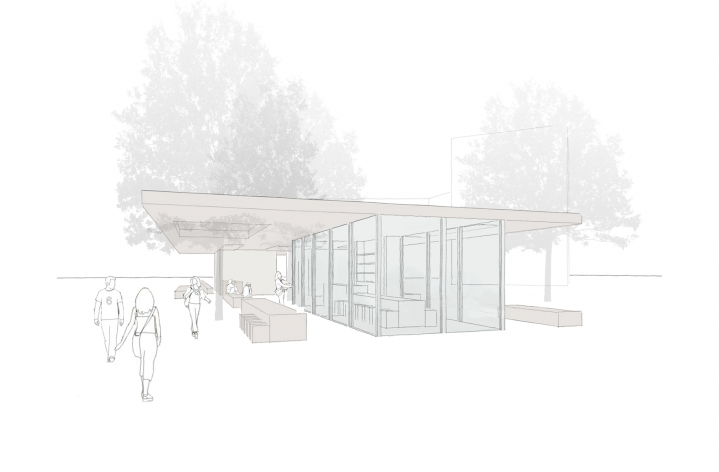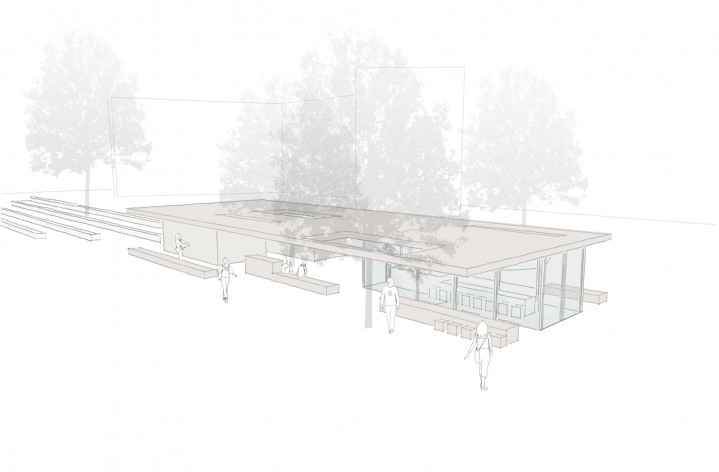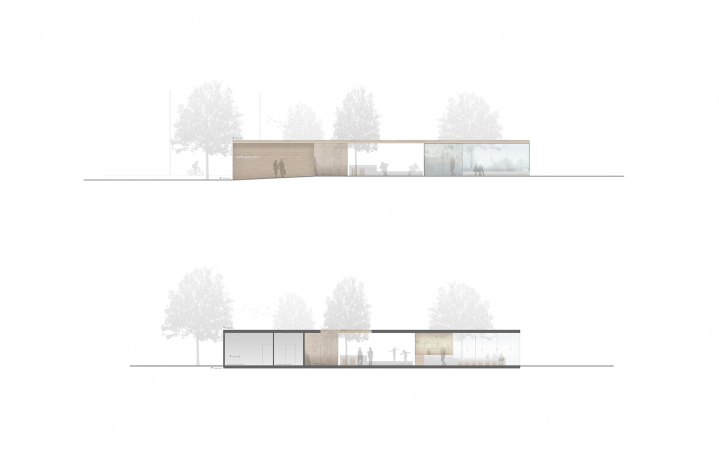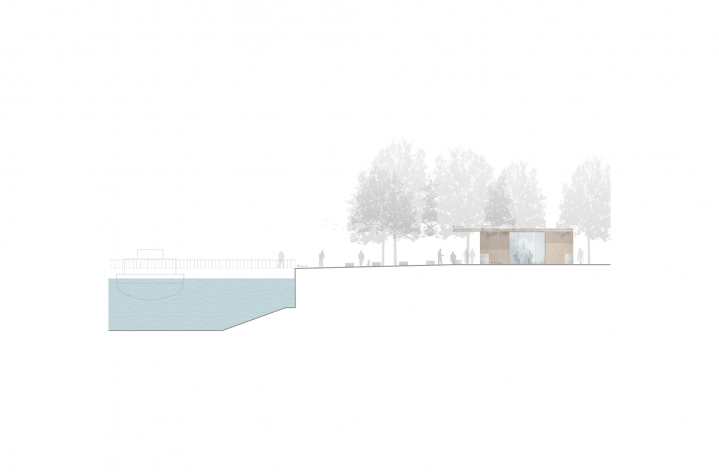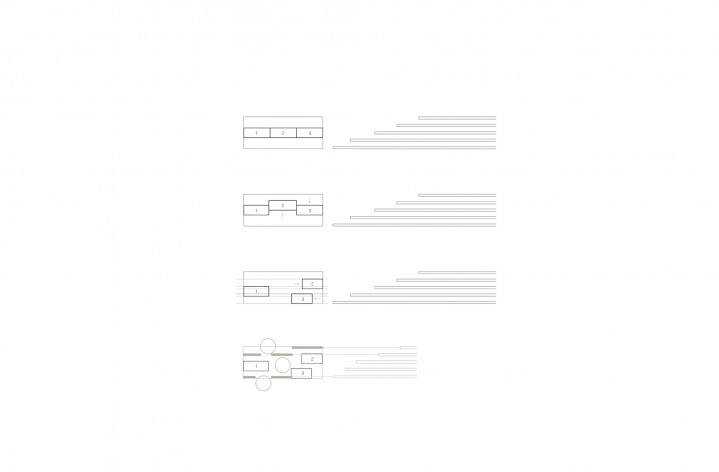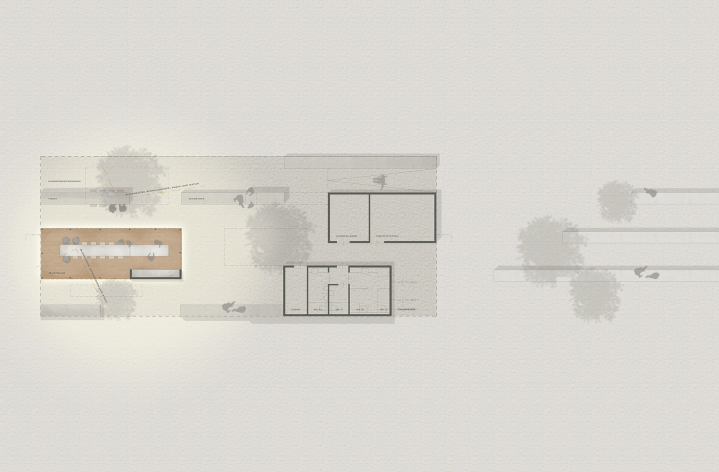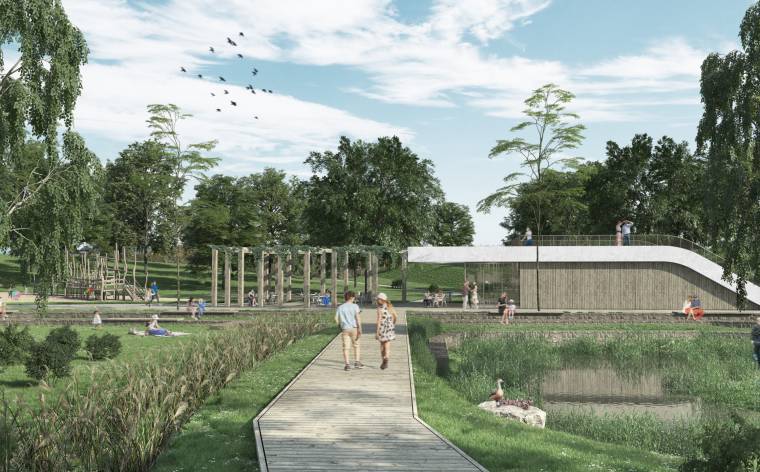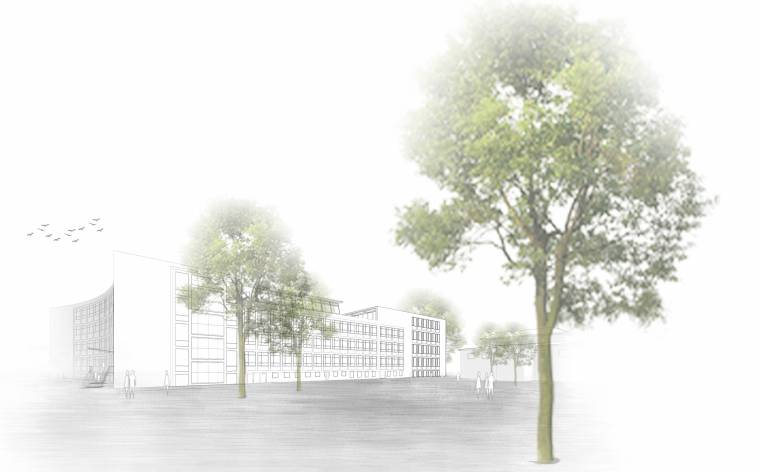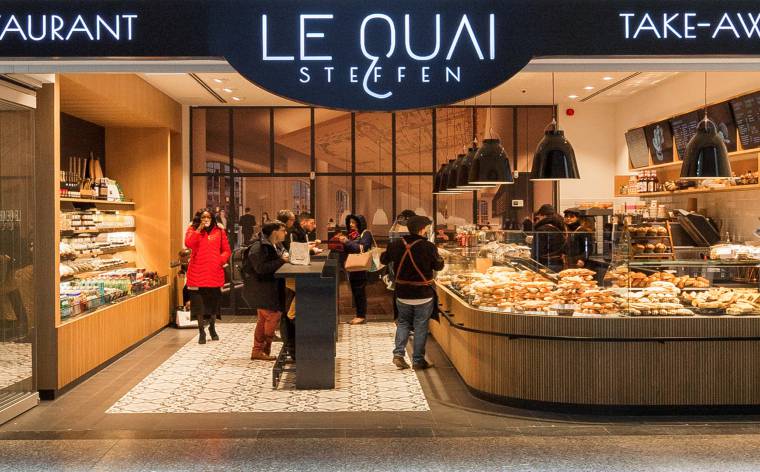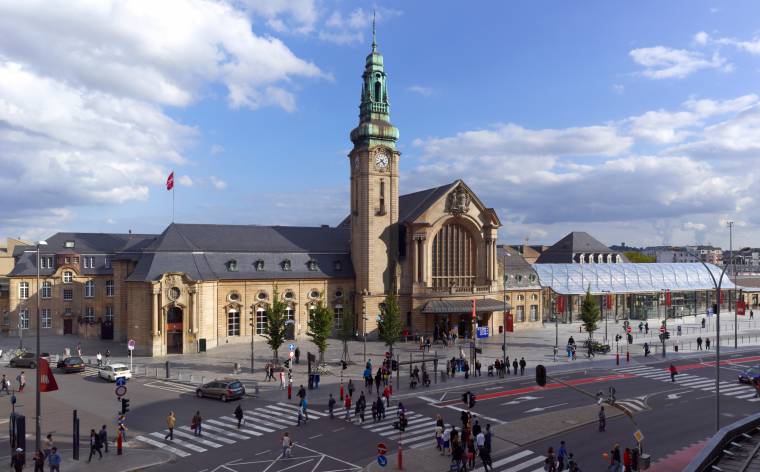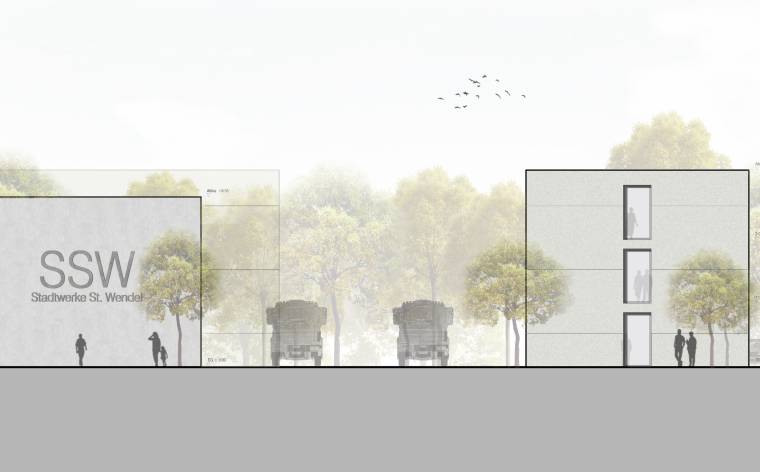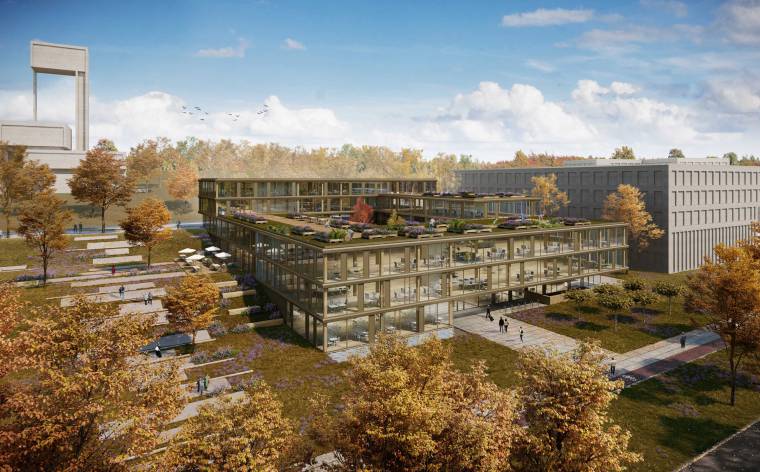Category :
Hotels + Gastronomy
Project :
New construction of a wine pavilion presenting regional wines and specialities
Client :
Zollhafen GmbH & Co. KG Mainz
Country :
Germany
Area :
gfa 75 m²
Planning period :
04/2015 - 06/2015
Share on
project New construction of a wine pavilion presenting regional wines and specialities awarding authority Zollhafen GmbH & Co. KG Mainz (GER) team WW+, Esch-sur-Alzette/Trier (LUX/GER) gfa 75 m² gv 300 m³ total area 730 m² construction costs (without transformer station) 200.000 € competition phase 04/2015 - 06/2015 restricted competition participation
Integration into surroundings
The particularity of the site on the Mainz southern pier head between the Rhine and the customs port, which borders the site to the southwest, provides only tangential specifications for urban planning references. The architectonic concept foresees three compact building cubes under a wide projecting and partly opened roof and places particular importance on a harmonious integration into the open space plans submitted by SINAI. The building ensemble with its flat and elongated body underlines the horizontal orientation of the planned overall facility, while the configuration of its individual cubes blends into the pattern of the planned seat steps. Its distinctive roof design is visible over a long distance and as such represents a true landmark.
Building concept
The concept for the architecture and the staging of the individual functional units is logically derived and continued on from the planned outdoor setting (seat steps, continuous flooring, inclusion of trees). Visually and functionally, the sculptural design of the building dovetails with the environment in that is provides a multitude of angles and visual connections to the Rhine, the harbour basin as well as the northern pier and adheres to the architectonic concept of a space continuum, by creating a smooth indoor-outdoor flow. This flowing space breaks with traditional space boundaries, enhances the pavilion character and resolutely implements the idea of a wine garden. The result is a design that provides its users with an enjoyable and natural atmosphere in the transition from landscape to urban space. At the same time, the architectonic concept achieves a sense of openness and transparency through the targeted use of materials, light and openings.
Functional connections and sequences within the building
Based on an analysis of the required room functions and uses, small units are created within the large structure. The volume formation of three boxes, united under one roof, automatically gives rise to the individual main function areas:
• Box 1, orientated towards the southern pier, houses the glass catering area, which includes a service kitchen. Folding elements allow for convertibility and flexibility of the space and spatial effect. Expansive visual connections open up: this is a simple space, which very strongly orientates itself to the outside with a generous, roofed open space.
• Box 2, in which the bathroom and storage facilities are housed, is designed to be closed. By being spatially separated from the catering area, the toilets can also be accessed outside of regular catering hours.
• Box 3, also closed, houses the transformer station, which depending on transformer requirements, can also be used for storage or else be reduced in size. The open space between the boxes can also be used out of season, among others for theatre or music performances, and as a meeting place, for both the inhabitants of Mainz and tourists. The seat steps planned by landscape architects SINAI have been integrated into the design and are partially developed further as fixed outdoor furniture (e.g. high table, planting table).
Outdoor dining and sun protection
The outdoor dining areas, which given their layout in terms of space and design undergo a functional extension in relation to the inside area, make for a welcoming stay alongside the natural environment and can also be used for customised purposes, such as events. Spatially and visually, the high degree of transparency leads to an intertwining of various room zones and thus increases the flexibility of use for the individual functional areas. The result is a ‘place of communication’. The large-surface roof provides sufficient sun and rain protection. Open skylights, the format of which reflects the proportion of the configured boxes, allow for planned trees to grow through them. The opened roof surface creates changing shadow patterns depending on light incidence, resulting in a range of ambiances within the roofed outdoor area.
Flood protection
Given that future flood levels can be predicted only to a limited extent, it is important to allow for a sufficient cushion on top of the known maximum water levels. For this reason, the finished floor level has been specified at a ground level of 87.3m. The technical equipment room of the transformer station has been increased by a further 0.6m. Watertight windows and doors in combination with efficient sealing will temporarily prevent the entry of flood water. In general, the implementation of the architectonic concept involves materials that have a surface that is robust and easy to clean.
Material concept
In a nod to ship building, the timber-frame construction of the closed pavilion units is clad with wide wooden boards, forming a wooden strip facing. The public auxiliary functions and the transformer station are accessed from the outside and retain the basic idea of a monolithic wooden box through the door elements being flush with the façade. The wide-span roof is also designed to be a wood panel construction. Given its public function, the catering area is designed to be mostly glass. To ensure a smooth transition, the floor covering as well as the materials chosen for the seat steps are adopted from the SINAI plans. In keeping with a holistic approach, robust, durable and sustainable materials have been chosen that are easy to care for and maintain their appearance over a long period of time.
Contact us !
